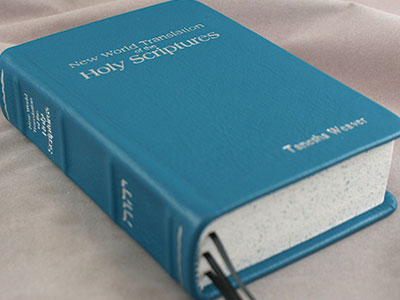Understanding The Meaning Of Paperback Books: A Comprehensive Guide
Books have been an essential part of human culture for centuries, and as the world has evolved, so too has the way books are produced and consumed. One of the most popular book formats today is the paperback. In this article, we'll explore the meaning of paperback books, their history, advantages, and differences from hardcover books. By the end, you'll have a deeper understanding of why paperbacks are such a beloved format for readers worldwide.
What is a Paperback Book?
A paperback book is a type of book with a flexible cover made of thick paper or paperboard. Unlike hardcover books, which feature rigid cardboard covers, paperbacks are bound together with glue, making them lighter and more portable. The term "paperback" refers to the material used for the book's cover, which is typically thinner and more flexible than the hardcover alternative.
According to the Britannica dictionary definition, a paperback is "a book that has a thick paper cover." This simple yet effective design has made paperbacks a staple in the book industry. They are often sold at a lower price point than hardcovers, making them more accessible to a wider audience.
- Isha Rana Viral Video
- Web Max Hdcom
- Mothers Warmth Chapter 3
- Mark Rutte Wife
- %D0%BD%D0%B5%D0%BA%D0%B0%D1%82%D0%B8 %D0%B0%D1%80%D0%B0%D0%B1%D0%B0%D1%87%D0%B8
The History of Paperback Books
Before the rise of paperbacks, hardcover books dominated the market. These books were often priced higher, making them less accessible to the average reader. However, the introduction of paperback books in the early 20th century revolutionized the publishing industry. Paperbacks offered a more affordable and convenient option for readers, leading to their widespread popularity.
Key Milestones in the Evolution of Paperbacks
- 1930s: The modern paperback was first introduced in the United Kingdom by Penguin Books, which popularized the format by offering high-quality literature at an affordable price.
- 1940s: The United States followed suit, with companies like Pocket Books and Ballantine Books producing mass-market paperbacks.
- 1950s-1960s: The paperback format continued to grow in popularity, with more publishers adopting the format and expanding the range of genres available.
Today, paperbacks remain a dominant force in the book market, offering readers a cost-effective and portable way to enjoy literature.
Types of Paperback Books
While all paperbacks share the characteristic of having a flexible cover, there are different types of paperbacks based on size and purpose:
- Gal Ritchie
- Xxxx Factor X X 1 X 4 4 X 1 Meaning Means
- Kim Chiu
- Pining For Kim
- Remote Iot Vpc Ssh Raspberry Pi Aws
1. Mass-Market Paperbacks
Mass-market paperbacks are the smallest and most affordable type of paperback. They are typically 4 to 5 inches wide and 7 to 8 inches tall, making them easy to carry and store. These books are often printed on lower-quality paper and are designed for mass consumption.
2. Trade Paperbacks
Trade paperbacks are larger and higher-quality than mass-market paperbacks. They are usually 5 to 6 inches wide and 8 to 9 inches tall, with better paper and binding. Trade paperbacks are often used for reprints of hardcover books or for collections of shorter works, such as comic books or graphic novels.
3. Pocket-Sized Paperbacks
Pocket-sized paperbacks are even smaller than mass-market paperbacks, designed to fit easily into a pocket or bag. These books are often travel-friendly and ideal for readers who want something lightweight and portable.
Advantages of Paperback Books
Paperback books offer several advantages over hardcover books, making them a popular choice for many readers:
- Affordability: Paperbacks are generally less expensive than hardcovers, making them more accessible to a wider audience.
- Portability: Their smaller size and lighter weight make paperbacks easy to carry and store, perfect for reading on the go.
- Durability: While not as sturdy as hardcovers, paperbacks are still durable enough for casual readers and can withstand regular use.
- Convenience: Paperbacks are often easier to find in stores and online, with a wide range of genres and titles available.
How to Use "Paperback" in a Sentence
Here are some examples of how you can use the word "paperback" in a sentence:
- "I prefer reading paperback books because they're lighter and easier to carry."
- "The bookstore sells both paperbacks and hardcovers, so you can choose based on your preference."
- "She bought a paperback copy of her favorite novel to take on vacation."
Collocations and Related Terms
When discussing paperbacks, it's helpful to know some related terms and collocations:
- Softcover: Another term for paperback, often used interchangeably.
- Hardcover: A book with a rigid cardboard cover, often more expensive than a paperback.
- Mass-market: Refers to the smallest and most affordable type of paperback.
- Trade paperback: A larger, higher-quality paperback often used for reprints or collections.
Conclusion
Paperback books have become an integral part of the modern reading experience, offering readers an affordable, portable, and convenient way to enjoy literature. From their humble beginnings in the early 20th century to their current status as a dominant force in the book market, paperbacks have proven their value time and again.
In summary:
- Paperbacks are books with flexible covers made of thick paper or paperboard.
- They are generally more affordable, portable, and convenient than hardcover books.
- There are different types of paperbacks, including mass-market, trade, and pocket-sized editions.
- Paperbacks have a rich history and continue to evolve alongside the changing needs of readers.
Whether you're a casual reader or a dedicated bibliophile, the paperback book remains an enduring choice for those who love the written word.

What Is a Paperback Book? - History, Definition & More | Blurb Blog

Hardcover vs Paperback: What is the Real Difference?

Hardcover vs Paperback: What is the Real Difference?